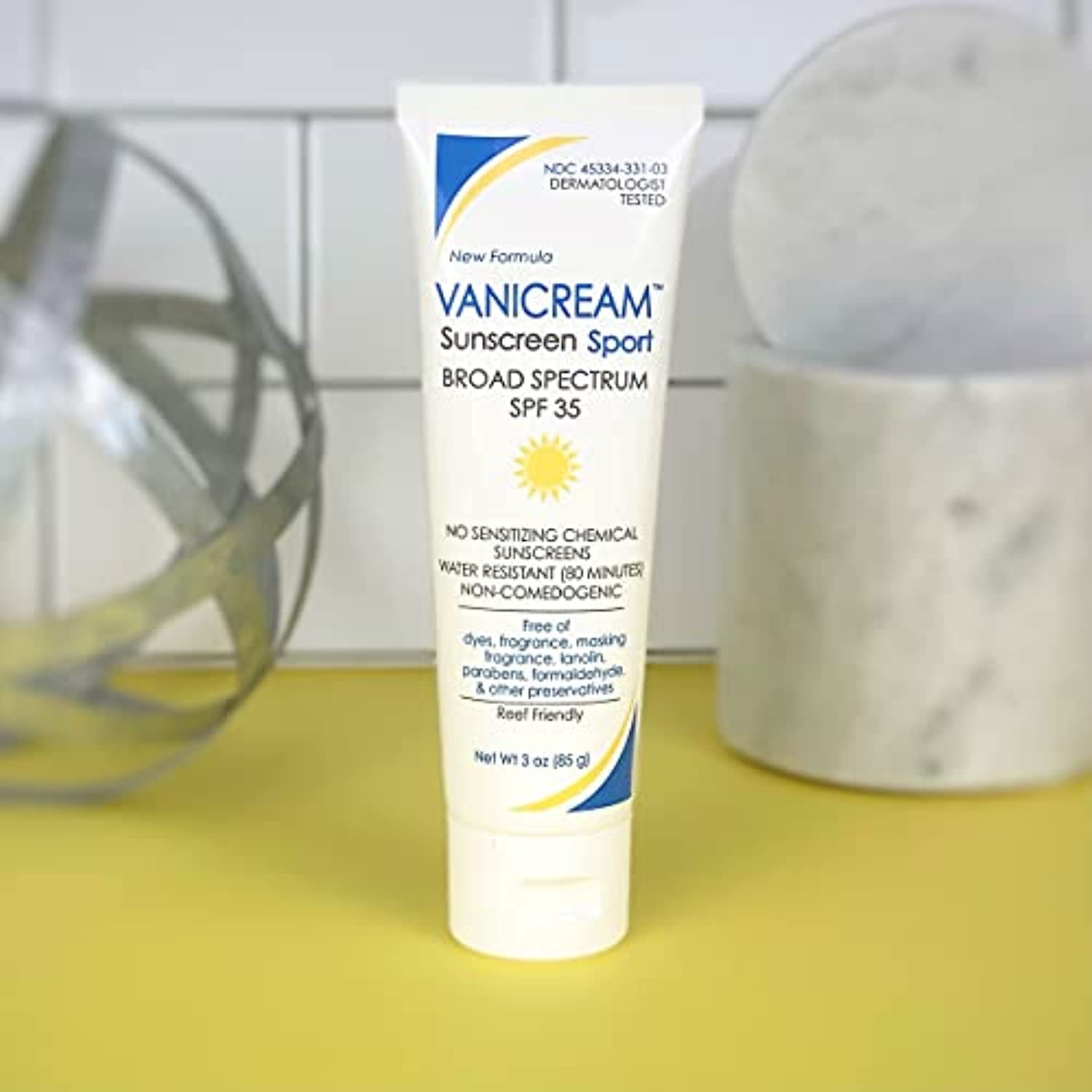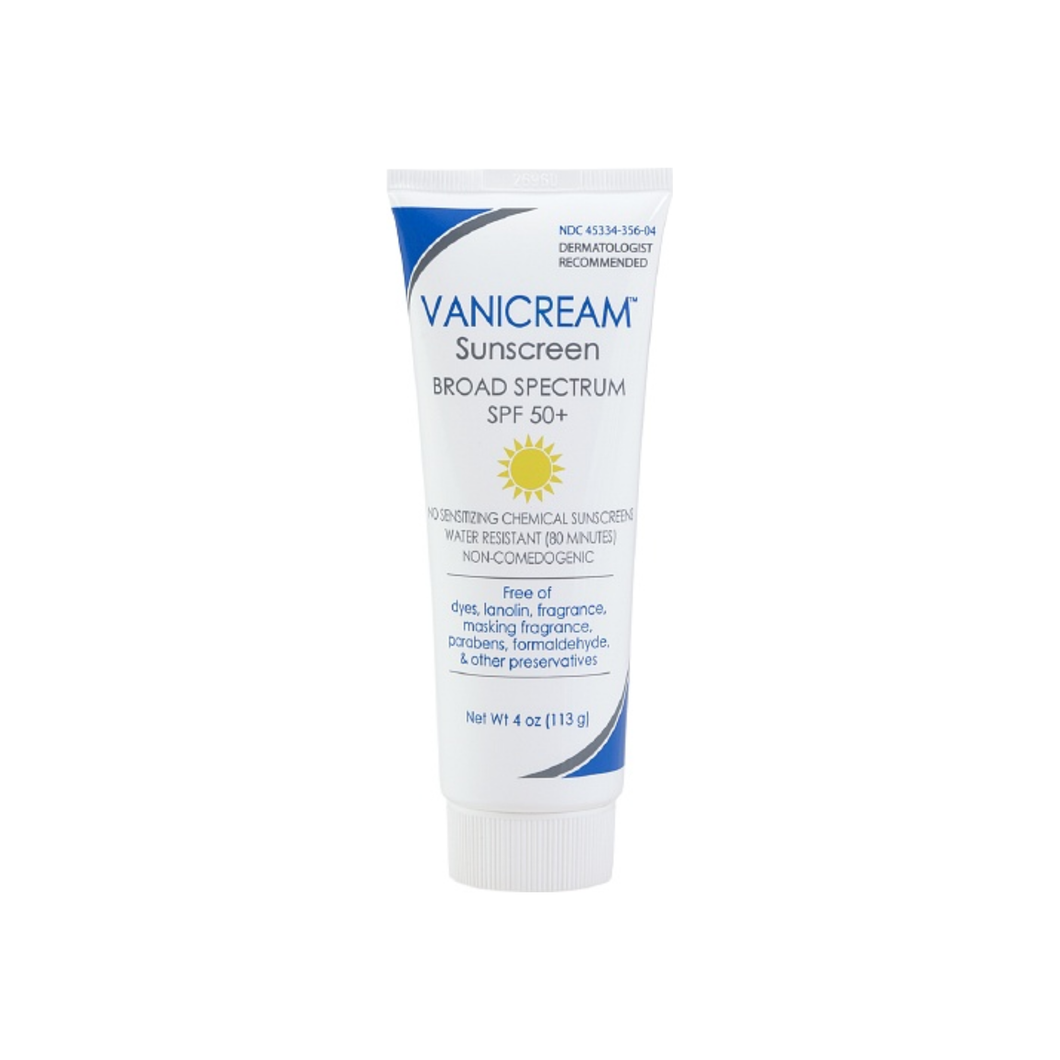

Vanicream sunscreen skin#
Takes maybe a minute or two to sink in and dry down, and it’s clear and comfortable. Applies slightly greasy, but sinks in within 5-10 minutes to leave skin smooth and moisturised if you’ve had issues with all-physical sunscreens being drying, the Vanicream ones (and Blue Lizard sensitive / baby SPF30) are well worth trying. Dab on skin, move it around using fingers. Recommend applying it to skin that’s been moisturised while damp, and is by now more or less dry (applying this stuff to damp skin will not work, as it’s hydrophobic).

Or, indeed, any of the BurnOut sunscreens: used for the last few years, then every reformulation made them thicker and pastier, and now that the one (Ocean Tested) that’s more tolerable on my skin is MORE thick and greasy than Vanicream 50… it’s back to Vanicream.Ĭan be used anywhere on the anatomy. Not as thick as the 30 or Badger and Badgerlikes.

V50 is an unfragranced cream, heavy compared to elegant whisper-light milky veils, needs to be rubbed in. with vitamin C, green or white tea extract, resveratrol, etc.) may help too. Certain antioxidants applied to skin (serums etc. And, as ever, sunscreen is only one small part of sun protection: the rest being covering up, wearing a hat and sunglasses, and seeking shade. If high PPD is what you’re after, that is going to mean using a sunscreen that’s not all-physical. YMMV: if your skin is sensitive but oilier (or you prefer the feel of lighter, drier sunscreens): suggest Replenix Sheer Physical SPF 50 spray (ZnO-only like V50, it’s also unfragranced and cruelty-free, but more expensive) or one of the all-physical sunscreens from CoTZ and EltaMD. Good on drier skin: many all-physical sunscreens are drying otherwise. The SPF 50 is actually slightly more fluid than the 30, which you might not expect. I’ve used this and its predecessor (SPF 60) successfully in more extreme climates (tropics & Antipodes). On this sensitive skin anyway, which is photosensitive, and without protection produces hives in under a minute and burns in under five. No reactions, no burning, in short it works. No cyclopentasiloxane (good as it usually breaks me out), does contain other silicones though many of them are in the Z-Cote and Ti-Silc coatings. PPD will be somewhere in the area of 8-10 maximum, as is usual for the better sort of all-physical sunscreens like this one. Uses microfine coated sheer ZnO (Z-Cote) and TiO2 (Ti-Silc), hence low percentage of actives (7% & 5% respectively) but high SPF.
Vanicream sunscreen free#
It is very basic (ingredients listed below), and designed and intended for sensitive skin like the rest of the Vanicream and Free & Clear ranges (available from dermatologists and online).

This is what I use if skin goes into irritated intolerant eczematic disasters. Even when I’ve been using other sunscreens and they’ve worked, I’ve still always made sure to have a tube of this just in case. It's definitely one of the best, or probably even the best option out there for sun protection available worldwide.The best sunscreen I have ever used. This seems to be true even if the skin is damaged, for example, sunburnt.Īll in all, if you've found a Zinc Oxide sunscreen that you are happy to use every single day, that's fantastic and we suggest you stick with it. But luckily, so far research shows that sunscreen nanoparticles are not absorbed but remain on the surface of the skin or in the uppermost (dead) layer of the skin. We wrote more about nanoparticles and the concerns around them here, but the gist is that if nanoparticles were absorbed into the skin that would be a reason for legitimate health concerns. Still, it's white and disturbing enough to use Zinc Oxide nanoparticles more and more often. Pinnell, it's slightly less white than TiO2. It leaves a disturbing whitish tint on the skin, although, according to a 2000 research paper by Dr. It's also often used to treat skin irritations such as diaper rash.Īs for the disadvantages, Zinc Oxide is also not cosmetically elegant. So much so that Zinc Oxide also counts as a skin protectant and anti-irritant. It's also highly stable and non-irritating. It protects against UVB, UVA II, and UVA I almost uniformly, and is considered to be the broadest range sunscreen available today. The first main difference is that while TiO2 gives a nice broad spectrum protection, Zinc Oxide has an even nicer and even broader spectrum protection.


 0 kommentar(er)
0 kommentar(er)
